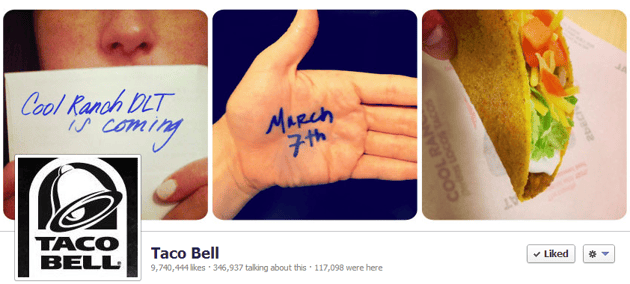Black Hat vs. White Hat Social Media Marketing

When it comes to social media marketing, there is a long list of best practices and worst practices that brand managers should be aware of.
Sometimes the lines of good and bad get blurry, and even though a brand might simply be trying to improve its follower or engagement metrics, it could be crossing over to the slippery slope of using black hat tactics.
Black hat tactics go against both the written and unwritten rules of social media. These tactics game the system in order to achieve better results. While some black hat tactics are clearly underhanded and easy to identify, other tactics are better disguised and are leveraged by thousands of brands on a daily basis, many times unintentionally. Read below to discover more about five black hat strategies, along with ways to clean up these tactics.
Black Hat: Buying your Audience
This is an obvious black hat practice, and it really makes no sense. While there are many available services that make it simple for someone to purchase fans or followers, this tactic has little-to-no value. Sure popularity is nice, but you shouldn't have to pay for it. Not only can this practice damage your brand's reputation with real fans and followers (if they find out), but chances are that these mysterious new audience members probably don't care much about what your brand has to say. Moreover, purchased fans and followers could contain spammers and hackers, which have the potential to cause a whole lot of problems for your brand and its real audience.
White Hat: Growing your Audience
The best way to grow your audience is with a variety of engaging content. This includes informative posts, images, videos, promotions, polls and any other type of interactive status update that grabs audience attention. Once this type of content is being created on a regular basis, social media managers should also consider either advertising on social networks or promoting their content so that more people can see it, which can be done on both Facebook and Twitter. These strategies spread the word about a brand's social profiles, which helps increase real fan and follower numbers.
Black Hat: Running Facebook Promotions Directly on a Page
This is an example of where the lines between black hat and white hat get blurry. Although many brands run promotions on Facebook on a regular basis, only the brands who are running these promotions within Apps on Facebook.com are actually complying with the Facebook Pages Terms.
White Hat: Running Legit Promotions
The Facebook Pages Terms make it clear that promotions must be administered within Apps, either on a Canvas Page or a Page App. However, social managers should also note some of the social network's other promotion rules, such as acknowledging that promotions are not endorsed or sponsored by Facebook, disclosing who is collecting each participants' information, as well as not using Facebook functions (such as likes, comments or check-ins) as valid actions for entries into a contest or promotion.
Black Hat: Spamming for Traffic
Another obvious black hat tactic is spamming for traffic. Most of us have witnessed social spammers, who tend to comment on popular posts and tweets with a random message in addition to a strange link. While most of you reading this article know better than to click on these spammy links, others don't, which is why this shady tactic continues.
White Hat: Posting for Traffic
The best way to fight against spammers is to report them, but this doesn't solve the dilemma of how brands can obtain more traffic to their sites via the social Web. Aside from posting intriguing content, another way brands can boost their visibility (and therefore direct traffic to their sites) is by participating in conversations on trending topics, which is most easily done on Twitter. By using a relevant hashtag in your post, Twitter users who are also using that hashtag to tweet will be more likely to see and interact with your brand and its updates.
Black Hat: Corrupt Cover Photos
Facebook cover photos are meant to be a representation of your brand, but some brands leverage this area to promote sales or encourage engagement. The Facebook Page Terms, however, clearly labels these tactics as prohibited. In fact, covers images cannot be made up of more than 20 percent text, include price or purchase information, contain website, email or mailing addresses, have references to Facebook actions or other call-to-actions.
White Hat: Innovative Cover Photos
If you are determined to use your cover photo to promote a new service or product, try to use a little imagination in order to not breach the Facebook Pages Terms. Taco Bell is an example of one brand that has successfully accomplished this task. The popular fast food restaurant updated its cover photo this morning to promote the company's new Cool Ranch Doritos Locos Tacos. While the cover photo definitely gets to the point, it also complies with cover photo guidelines by not including too much text, a call-to-action or pricing information.

Black Hat: Sneaky Automation
Using automated services for social media campaigns is another place where the lines between black and white hat get blurry. While these services can make life much easier for social media managers, they can also be major annoyances when used in the wrong way. An example of a bad use of automation is when brands send out generic messages to new followers and fans thanking them for becoming an audience member. While this practice isn't necessarily "bad" when used as stated above, some brands take the thank you message a step further by asking their new fans to take an immediate action in engaging with the brand by adding a link to their website, a product or additional social profile within the message. While this might not bother some audience members, it can come off as pushy and turn others away.
White Hat: Automation to Help Save Time
Automation tools should be used to help brands make the posting process less time consuming. Although service like IFTTT can make some social media management tasks easier, brands should remember that interactions with fans and followers should come off as authentic, and not from a robot.

Subscribe to Our Newsletter!
Latest in Social Media










